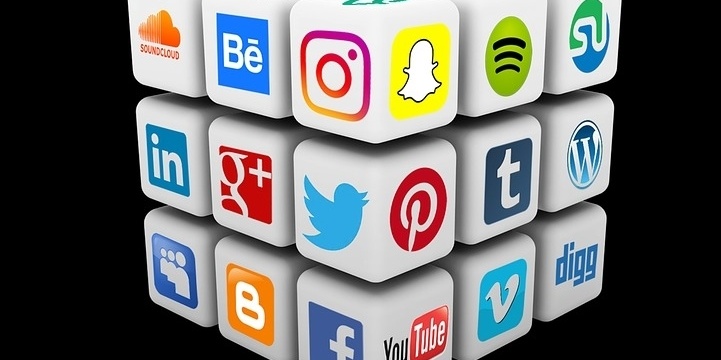Gen AI: Redefining Marketing Strategies for the Future
Envision a world in which creative limitations do not exist for marketers. A world in which they can communicate as a seamless unit and provide the appropriate offer to the right person at the right moment, a future where improved consumer insights coexist with efficiency advantages from automation and automated content creation, a scenario in which consumers locate and use the products and services they need and want more quickly and with less effort, a future where marketers can prioritize innovation and more effectively meet and provide value to customers. This hyped-up customization at scale is finally closer to reality thanks to generative artificial intelligence (gen AI).
THE MOST COMMON INSIGHTS ~
Generative AI's economic potential:
The next productivity frontier: which are inclusion, equality, and diversity.
Gen AI holds the potential to revolutionize the current landscape of consumer marketing. At the corporate level, marketing strategies that once required months for development, customer insights generation, and targeted implementation can now be executed within weeks or even days, often leveraging automated testing and large-scale customization. While customer service and website development activities often pose challenges in engaging with individual customers, when executed effectively, they can significantly enhance satisfaction and foster increased engagement. To better discern opportunities for innovation, marketers can simultaneously analyze and interpret data in various formats, including text, images, and videos.
Fine-grained customization is becoming enabled by Gen AI in ways that were previously unattainable ~
The current wave of AI-driven productivity enhancements is beginning to leave a significant imprint on the global economy. Recent findings from a McKinsey study suggest that artificial intelligence (AI) has the potential to contribute a staggering $4.4 trillion to global productivity annually. Among the four key functional areas identified in the study, marketing and sales stand out, projected to capture approximately 75% of this value. Specifically, thanks to AI, marketing productivity alone could surge by 5 to 15% of global marketing expenditures, equating to around $463 billion annually.
Businesses that remain in the dark about the impending change run the danger of falling behind ~
Businesses are already stepping foot in this new world by taking advantage of publically accessible previous-generation AI models. Their next move will be to set themselves apart by combining those models with their data and technologies, which will provide unparalleled personalization and increased capabilities. Lastly, we examine the long-term prospects for businesses looking to innovate even more by using Gen AI to completely reimagine their end-to-end operations.
Getting started with gen AI in marketing:
Current uses of gen AI in marketing mostly consist of off-the-shelf pilots integrated into existing workflows. These efforts are delivering immediate value by helping companies generate copy and images in less time, personalize campaigns, and respond to and learn from customer feedback. But they are also helping companies learn about gen AI, build the capabilities they’ll need to take advantage of it in deeper ways, and free up valuable employees for higher-level tasks. That’s one of the attractions of gen AI: as the following examples show, it has the potential to deliver value quickly, unlike other technologies that reward companies only after years of investment.
Personalization of marketing campaigns. Crafts retailer Michaels Stores, for example, is using gen AI as part of its approach to deepen customer engagement through more personalized and frequent interactions with its shoppers. The company built a content generation and decision-making platform to help with copy development and to better understand how customer segments engage with different messages.
Unstructured customer data analysis. Hyperpersonalization efforts also benefit from more precise analyses of consumer behavior, which can be augmented by gen AI. Personal-clothing service Stitch Fix, for example, uses gen AI to help stylists interpret customer feedback and provide product recommendations. Instacart is using gen AI to offer customers recipes and meal-planning ideas and to generate shopping lists.
Process automation. Marketers have always played a core integrating role across enterprises. Unsurprisingly, we are seeing opportunities for companies to automate interactions between marketing and other functions (for example, service, sales, product development, research and development, and legal reviews). One direct-to-consumer retailer, for instance, is using gen AI to help resolve customer tickets, such as order-taking or repair requests. By using gen AI to automate process steps (for example, retrieving information at the back end, making necessary changes, and replying to customers in the brand’s voice), the company has seen a more than 80 percent decrease in time to first response and a four-minute reduction in average time to resolve a ticket. The use of gen AI has also given the company’s customer support team more time to focus on higher-level customer interactions. In addition, there are significant opportunities to streamline the creation of multi-version, long-lead-time marketing assets, such as media plans, quarterly reviews, strategic plans, and meeting agendas.
Opportunity identification and idea generation. Marketers are using gen AI to analyze competitor moves, assess consumer sentiment, and test new product opportunities. Rapid generation of response-ready product concepts can improve the efficiency of successful products, increase testing accuracy, and accelerate time to market. Mattel, for instance, is using AI in 'Hot Wheels' product development to generate four times as many product concept images as before, inspiring new features and designs. Kellogg’s is scanning trending recipes that incorporate (or could incorporate) 'breakfast cereal' and using the resulting data to launch social campaigns around creative and relevant recipes. And L’Oréal is analyzing millions of online comments, images, and videos to identify potential product innovation opportunities.
As companies start exploring opportunities with gen AI, they will want to ensure that whatever efforts they launch are in keeping with their overall marketing goals. Attempting to incorporate too many different-gen AI initiatives in the hope that something sticks can end up being costly, diffuse, and difficult to track, making it hard to incorporate whatever lessons are generated across the launches. Instead, companies can focus on two or three use cases wherein off-the-shelf gen AI tools can provide immediate impact in priority domains.
Throughout the process of applying and adopting gen AI, marketers need to ensure that measures are in place to mitigate risks such as “hallucinations” (when gen AI produces confident-sounding outputs that are not grounded in verifiable facts, data, or algorithmic patterns), biases, data privacy violations, and copyright infringements. Gen AI is typically not well suited for high-stakes decision-making, regulated environments, or applications that involve a heavy volume of requests or numerical reasoning. We’ve found that establishing an accountable leader, as well as a technology oversight board, are important first steps. Other guardrails may include working in a level of human review for anything going directly to a customer or limiting the kinds of topics that gen AI can address for marketing campaigns.
Customized gen AI for marketing:
Lots of companies have started developing use cases like the ones listed above. However, companies seeking to truly differentiate themselves are going further. They are creating unique, customized solutions for customers by adapting off-the-shelf models that are trained on smaller, task-specific data sets. This is when companies can start to see exponential improvements in customizing everything for customers from campaigns to products. When companies start reshaping existing gen AI models with their data and for their own highly specific needs, the results can be profound.
In the world of marketing, fine-tuning an existing gen AI model might mean training an open-source model with proprietary data (for example, brand guidelines or historical-marketing-campaign creatives) to generate bespoke content. This kind of semi-custom gen AI solution can be regularly updated with new company data and ongoing learning. The result is a continually improving, bespoke-gen AI solution that helps increase a company’s competitive advantage as it develops.
We are already seeing companies experiment with gen AI in high-priority use cases. Here are two examples:
Hyperlocal outreach ~
A European telecommunications company harnessed the power of Gen AI to transition from labor-intensive, generalized customer outreach messaging to targeted communication that resonated more effectively with specific audience segments. Previously, the telco's messaging strategy was limited to just four broad segments due to resource constraints, resulting in messages that often failed to connect with recipients. Notably, messages sent in dialects not native to the recipients led to notably low conversion rates, given the country's linguistic diversity.
To address these challenges, the telco developed a Gen AI-powered engine capable of generating highly personalized messages tailored to 150 distinct segments. Leveraging non-personally identifiable information data, the engine customized communications based on each segment's demographics, geographical location, dialect preferences, and other relevant attributes. Stringent guardrails and governance protocols were implemented to ensure compliance with risk, ethics, and privacy standards, involving full human oversight and review at every stage to control the level of personalization and the number of message variations.
The outcome of this initiative was striking: a 40 percent increase in response rates accompanied by a notable 25 percent reduction in deployment costs, showcasing the significant impact of leveraging Gen AI for hyper-personalized communication at scale.
Innovation in product, creative, and experience development ~
An Asian beverage company was looking to enter the EU market more quickly than it might have taken with traditional innovation and marketing approaches. Historically, the company could spend an entire year coming up with a new product concept for a new market. It turned to gen AI to help answer two questions: what kinds of new beverages might appeal to European customers and drive growth, and what innovative methods might speed up the product innovation process from end to end? The beverage company first used ChatGPT to provide user insights by feeding it aggregate, nonconfidential customer information and then asked questions about flavor trends to generate a baseline understanding of beverage consumption and consumer behavior in the EU market. This process took a day, whereas this kind of market research typically takes up to a week. The marketing team then deepened those insights by layering on top of more traditional research methods, such as ethnographies and digital diaries.
Researchers and designers also turned to gen AI to refine product concepts. In the world of product design, it often takes an industrial designer up to seven to ten days to develop a single high-fidelity beverage concept that encapsulates form, flavor, and packaging. Using a text-to-image gen AI tool, the company was able to produce 30 high-fidelity beverage concepts with detailed imagery in a single day. Marketers then took these concepts into the field to perform rapid testing with customers. Because the gen AI concepts felt real, the marketers were able to collect solid feedback in this early stage about what to explore further. Ultimately, Gen AI helped the beverage company complete a yearlong process in just one month.
Moreover, pioneers in Gen AI marketing may begin developing valuable use cases. These are frequently complicated and will probably need major adjustments to any first draft of the solution as well as the fine-tuning of existing AI underlying models (as opposed to adjusting an off-the-shelf solution). The most difficult task will be scaling. Since both technical and commercial leadership are essential, start by making sure they share ownership. Subsequently, to guide deployment and scaling, continuously test and iterate the use case in response to user input.
Proceed with Caution ~
AI indeed holds immense promise, yet it's imperative to recognize its limitations and implement the necessary safety measures. Early adopters venturing into AI experimentation have encountered numerous setbacks and false starts. Some of the most common errors include:
Hallucinations:
Because AI is far from flawless, there is a chance that some inputs can be misinterpreted by the engines, leading to erroneous results or "hallucinations." The marketing team must do a constant audit of AI output when implementing AI in a production setting to identify these errors.
Data Security & Privacy:
To synthesize and provide results that boost business, artificial intelligence (AI) needs enormous volumes of raw data. A frequent occurrence in this intricate world of big data ecosystems, unforeseen data breaches and consumer privacy actions have caused rising headaches for certain firms.
User Resistance & Trust:
Customers are often aware that they are interacting with a transaction that was created by a computer. To build the trust necessary for a fully digital engagement to be trusted, the brand must be transparent. Achieving the ideal balance between privacy and customization is crucial for marketers, as is being open and honest with consumers about the use of AI in their campaigns. AI has the potential to drastically change how merchants communicate with their customers when used wisely and strategically.
Although the precise outcomes may differ based on the sector, corporate objectives, and implementation techniques, artificial intelligence (AI) has shown promise in improving customer experiences, boosting sales, and boosting marketing efficacy in the coming years.



 (1).jpeg)



